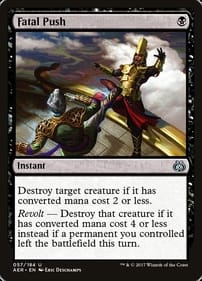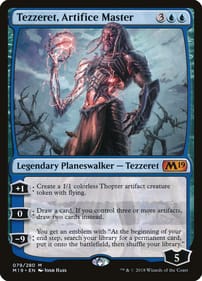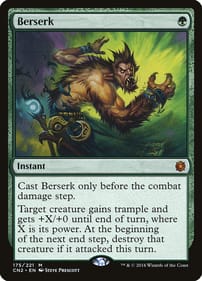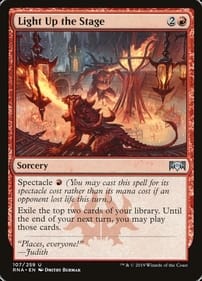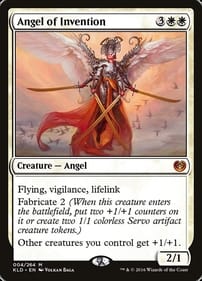Comics vs. Graphic Novels
By Dan BrownWhen is a comic book not a comic book? When it’s a graphic novel.And what the heck is a graphic novel? Your guess is as good as mine.Comic lore has it the term was invented by legendary creator Will Eisner. I get the impression Eisner – known for the Spirit newspaper strip – couldn’t sell illustrated stories to a legitimate publisher as comics, so he came up with the “graphic novel” label solely as a way to sell them.So it was a marketing gimmick from the get-go.I am old enough to remember comics before the advent of the graphic novel. Eisner’s A Contract With God came out in 1978, the irony-in-hindsight being that it isn’t a novel, but a collection of four short stories.But as a graphic novel, it has some kind of heft it didn’t carry as a comic – even though it’s a sequential story told with pictures, panels and text. Isn’t that the definition of a comic? It landed differently owing to the elevated subject matter – just dig that title.Current editions of A Contract With God proclaim its place in comic history. Does that mean anyone who cracks the book reads it in a different way than a “mere” comic? I don’t think so.What maybe shouldn’t surprise anyone is how Marvel got on board with the term fairly quickly. By 1982 Stan Lee and friends were trumpeting The Death of Captain Marvel as one of Marvel’s first forays into graphic-novel territory. It had a unified storyline and was bigger and more expensive than the monthly mags of the time, but used characters from the company’s superhero line.Meanwhile, another important thing was happening in the background. Harvey Pekar had started publishing the comic series American Splendor in 1976. His appearances in the 1980s on David Letterman’s show may have been how he caught my attention.Pekar is important because he was using comics in a revolutionary way: To tell everyday stories, rather than put a spotlight on costumed do-gooders. It was all about the mundane, a staggering departure at the time.I read stories like The Watchmen or Dark Knight Returns in serial form. They are now known as landmark graphic novels, but when I was experiencing them one month at a time I never predicted they would eventually be collected in anthology form. Pretty much all comics are now published with an eye to the eventual graphic novel.So somewhere along the line Pekar’s innovative insight – comics can be used to tell any kind of story – got grafted onto the emerging use of graphic novels to tell more “serious” superhero tales.And a genre was born. I’ll grant that I may be the only person who cares about questions like this. Maybe I’m the only individual demented enough to care. And I guess as long as graphic novels and comics are experienced as a printed or online product meant to be read, the distinction doesn’t matter.I originally started writing a weekly column about graphic novels because the industry had reached a saturation point – there were enough graphic novels coming out, I could potentially review a new one every week. We’re now at the point in the history of the medium where I tell graphic-novel newbies, “If there is a topic or issue that interests you, there is a graphic novel out there for you.”Oh, and I know I left out a bunch of other definitions. What is a cartoon? What is a newspaper comic strip? What is a Sunday funny? A web comic?All fodder for future columns.Until then, I would love to hear your thoughts in the comment box below.Dan Brown has covered pop culture for more than 31 years as a journalist and also moderates L.A. Mood’s monthly graphic-novel group.
Make mine Byrne
What you probably don’t know about the Forest City is how it’s the hometown of the leader of the Marvel comics superhero team Alpha Flight.That’s right, James (Vindicator) Hudson hails from London, Ontario.This bit of trivia is on my mind because last October the company re-released the Alpha Flight comics by John Bryne Omnibus, which collects the team’s early exploits in its own title and others from the 1970s and 1980s.I’m almost 600 pages into the hefty tome, which clocks in at 1,248 pages long. Being a fan of Byrne, the sometime Canadian artist/writer, obviously I love the thing.I began following his work earlier in the Me Decade when he penciled titles like Doomsday+1 and Space: 1999.What can I say? Something about his precise, elongated lines spoke to my younger self. I was part of the generation whose puppy love for superheroes grew into something deeper when Byrne was assigned to such Marvel titles as Iron Fist, Team-Up and, of course, the Uncanny X-Men.We were Wolverine fans before the Canadian X-Man became an unkillable killing machine. And we were thrilled when Wolvie’s former allies, Alpha Flight, got their own series.What we didn’t know was Byrne did not have a fun time doing the first 29 issues of Alpha Flight, which appear in this collection along with their appearances in mags like the Incredible Hulk, Machine Man and Two-in-One. For a while there, the Alphas – Sasquatch in particular – were perpetual Marvel guest stars.As he has stated in interviews in the years since, Bryne was frustrated with the limits of Canada’s own super-team. All Alpha Flight had been created to do, he famously noted, was to survive a fight with the X-Men. They were flimsy, two-dimensional.Some fans have pointed to how Bryne would kill off major characters as evidence he had soured on the character. Which didn’t stop the title from selling. Indeed, his first royalty check for Alpha Flight, at a time when royalties were not standard practice at Marvel, was reportedly the biggest Marvel had issued to that point.What jumps out at me in the omnibus edition?*Wolverine had his roots as a mortal character. In one X-Men story collected here, he even gets winded from running a lot. That destructible version of the character is long gone.*Byrne has spoken of how he always wrote Northstar true to his sexuality, even before Marvel was ready to reveal him as the company’s first queer superhero. It checks out. From the vantage point of being an adult reader, it’s clear Northstar is gay.*Vindicator, who changed his name to Guardian, was just getting interesting before he died in action.*I love Byrne’s depiction of Canada as home to ancient evils. He handled both pencils and inks on Alpha Flight, which means each panel lacks the background detail of when Terry Austin was inking his work in X-Men.*The issues here have a good balance of magic-driven storylines, street-level adventures and out-and-out superheroics. A favourite Byrne villain, the Super Skrull, even makes an appearance.*Each issue raises as many questions as it answers. Byrne was doing a superb job, given the constraints of monthly comics, of adding layers to each character. Keep in mind he was in the middle of a long run on Fantastic Four at the same time he launched Alpha Flight. All in all, the Alpha Flight by John Byrne Omnibus is a worthwhile trip down Memory Lane for any comic fan who grew up Marvel.Dan Brown has covered pop culture for more than 31 years as a journalist and also moderates L.A. Mood’s monthly graphic-novel group.
This is a Golden Age for Comics
Let me begin by making a bold statement.There has never been a better time in human history to be a fan of comics than now.The Golden Age of Comics is upon us. Don’t let anyone tell you otherwise.There has never been a greater variety of comics dealing with a multitude of subjects. Comics art has never been better. Plus comics are finally being taken seriously as a form of expression. And there are more opportunities to discuss comics and appreciate them than at any time before.Don’t believe me? Imagine a time when most of the comics on the spinner rack at your local drug store were published by two companies. They were all dismissed as stuff for children. There was no such thing as graphic novels, no major publisher looking for sustained narratives that weren’t about heroes with superpowers. And if you wanted to share your love of comics with fans around the world, you had no outlet to do so.I grew up in such a time. It was called the 1970s. Trust me, things were not better in my day. Back then, the general view was that comic books were something children grew out of. Why didn’t Stan Lee use his real name when he helped create the Marvel Universe? Because he was saving it for his attempts at “serious” literature.Nor was he the only one, as creators were made to feel embarrassed about working in an industry not treated like a legitimate trade. When new comic books came out, they weren’t reviewed in the newspapers of record. Movies featuring costumed do-gooders were few and far between.Fast-forward to 2024. Things are so much better in so many ways.Comics and graphic novels are recognized as a valid medium for telling all kinds of stories, not just ones about guys and gals in tights.Want to write about what it’s like to work in Alberta’s oil sands? Want to recollect your teen years toiling in a pulp and paper mill, dreaming of being a cartoonist? Want to explore the effects of an autocratic government in North Korea? Want to recount your hilarious attempts to capitalize on the “vinyl resurgence?” All of those stories have been told in graphic novels by Canadian creators. It’s true superhero comics did have a mass audience in the 1940s among children, but let’s suppose you’re a fan today of a particularly obscure character – say Marvel’s Rocket Raccoon. If you want to learn more about him, there are entire monthly titles devoted just to his exploits, featuring only him without any of his Guardians of the Galaxy teammates. Plus you can buy action figures and every other possible piece of merchandise based on Rocket.In fact, thanks to big-budget motion pictures and streaming shows, superheroes are more central to our culture than they were even back in the post-Second World War period. These productions feature serious talents like Robert Redford, Cate Blanchett, Jack Nicholson and Natalie Portman.The New York Times wasn’t reviewing comics or graphic novels when I was falling in love with them as a kid growing up in small-town Ontario. Academics weren’t doing serious research on them. There wasn’t a Scott Pilgrim or Sweet Tooth series on Netflix for me to enjoy, because none of that infrastructure existed.Nor did we have creators like a John Porcellino, whose work is so perfect that I consider it poetry in the form of sequential panels. Hey, I still love the Marvel mags of my childhood, but they weren’t that creative. And now we have a dedicated network of retailers like L.A. Mood devoted to selling comics, connected by a global-information source that gives everyone the tools to express their love for whatever title or character or storyline they fancy. If you like a property, there’s a website for it. All of which is bolstered by a group of in-person events – here in London, that includes Free Comic Book Day, Forest City Comicon, and Tingfest. One of the big secrets in life is to know you have it good WHEN you have it good, not later. As the song says, you don’t know what you got till it’s gone, so my advice to anyone reading this column is to revel in this current Golden Age while it lasts.Dan Brown has covered pop culture for more than 31 years as a journalist and also moderates L.A. Mood’s monthly graphic-novel group.
Looking Back at 2023: The Year in Comics
By Dan BrownThe categories are arbitrary. My picks are open to debate. You likely have come to totally different conclusions.That said, here are the highlights – according to no one but me – from the last year in the comics biz.Villain of the year: The hip dragon from Scott Chantler’s Squire & Knight graphic novel, who sounds to my ear like a beach bum. When attacked by a self-promoting paladin, he responds in a laconic way: “Pretty rude, man.”Hero of the year: Common sense, as portrayed in the same book, which comes from the Stratford-based comic creator. It outlines the adventures of a medieval do-gooder and his young apprentice, who refuses to jump to conclusions based solely on circumstantial evidence. Turns out common sense is actually not that common. Writer of the year: BealART grad Lynette Richards, for Call Me Bill, an evocative tale delving into a long-standing East Coast maritime mystery. Richards gives the title character, an actual mariner, a plausible back story, in the process paying tribute to someone who was ahead of the times. Artist of the year: London’s D.S. Barrick for his work on Murgatroyd & Nepenthe, which he describes as a tale of two travelers trekking through the hinterlands of the imagination. It’s a visual feast not to be missed.Comic of the year: Crimson Fall: Lambs of God. This Derek Laufman mini-comic about two mismatched characters, a cleric and a knight, can be read as a straightforward story about demons in a dungeon, but underneath that is a much broader debate about the limits of reason to explain the world around us.Graphic novel of the year: Palookaville No. 24, particularly the latest instalment of Nothing Lasts, Seth’s autobiography-in-the-making. He calls attention to the constructed nature of his life story, encouraging the reader to think about the way memory becomes fiction. Or was it always fiction? (I suppose Seth’s latest is technically a comic, but it has a hard cover so it qualifies as a graphic novel in my mind. It’s not like Seth is publishing it monthly.)Panel of the year: The final panel of Are You Willing to Die For The Cause?, the Chris Oliveros book about the FLQ’s early days. On page 134, he shows the police celebrating the demise of the FLQ – just as the separatist terrorists were about to embark on their bloodiest exploits. “Hurrah!” the officers cheer. Bitterly ironic. The same book features a panel on page 123 of an FLQ hideout littered with empty Labatt 50 bottles. It doesn’t get more Canadian than that!Cartoon of the year: A New Yorker cartoon by Ellis Rosen depicts God, wine glass in hand, explaining to an angel helper why heaven looks different: “I had the vastness of creation replaced with hardwood floors.” Originally published two years ago, it came up in my New Yorker desk calendar on Dec. 1.Understatement of the year: Bob Iger, Disney CEO, said the glut of Marvel content online and in movie theatres has “diluted focus and attention” among fans of the company’s superheroes. (The Marvels, which I’m told is a strong movie, debuted with less than $50 million at the box office on its opening weekend, a first for a Marvel release.)Comeback of the year: Michael Keaton reprised his role as the Dark Knight in The Flash. By many accounts, the funnyman was the best thing about the motion picture, which served as the swan song for the current phase of DC’s big-screen superhero adaptations.Disappointment of the year: Marvel introduced Doctor Aphra in its Darth Vader title way back in 2015, yet still no movie or show built around the amoral archeologist. At this rate, the gonk droid will have its own Disney+ series before Aphra.Dearly departed: Among the comic creators who died this year are Al Jaffee, Joe Matt, Keith Giffen and Chris Browne. I once had a lovely conversation with Browne about how he continued the Hagar the Horrible newspaper strip after his father retired. Just a really nice dude to interview. The world is poorer without these guys.Comic blog/website/web presence of the year: I continue to enjoy a Facebook group seemingly titled with me in mind, Old Guys Who Like Old Comics. Jeremy Kirby is also doing yeoman’s service preserving his grandfather Jack Kirby’s legacy with his group the King of Comics.Comic journalism of the year: The book Dirty Pictures by Brian Doherty is a history of the underground comics scene in the U.S, the surprising part being how much of an impact these often-crude publications made on mainstream comics culture. It shows what can be done in the medium without an industry censor.Now, over to you . . . what were the comic highlights for you in 2023? I want to hear all of your picks in the comment box below. Feel free to invent some categories!Dan Brown has covered pop culture for more than 31 years as a journalist and also moderates L.A. Mood’s monthly graphic-novel group.
The Next Big Marvel Fad Is Here
By Dan BrownI’m not one to say comics were better when I was a boy – they weren’t better, they were just different.That said, I do miss the desperate attempts by the editors at Marvel Comics to cash in on the latest trend, whether it be kung fu or black power or disco music.I miss the slapdash efforts to tap into the collective consciousness from the folks at the House of Ideas whenever the Next Big Thing came along in the 1970s and early 1980s.You don’t see that much in today’s comics.What I’m talking about are the weird, wonderful books like Marvel Premiere No. 50, which came out in 1979 and featured shock rocker Alice Cooper.That’s right: Along with Captain America, Spider-Man and the rest, the then-edgy Alice Cooper was once a Marvel protagonist.You can imagine the wishful thinking: Cooper was selling a pile of albums and had generated a lot of buzz with his at-the-time outrageous stage shows, so the brain trust running the firm likely figured gangbuster sales would follow if they slapped Alice’s name on a comic. That may also be why comics and characters prompted by popular trends were mostly half-ass affairs.The creative team had to get them onto stands quickly, since by the time retailers reported sales figures back, the newest mania could be over.Nor was Cooper the first musician to appear in the pages of a Marvel adventure: Gene Simmons and the guys from KISS likewise showed up in the magazine-size publication Marvel Super Special No. 1, which landed in 1977.But the ultimate example of cashing in on a musical craze had to be Dazzler, the mutant who had the powers of . . . a disco ball. She first appeared in 1980’s Uncanny X-Men No. 130. You won’t be surprised to learn the mutant superhero team discovered her in a chic New York nightclub a la Studio 54. Having her debut in the pages of one of the brand’s most popular titles didn’t hurt, and the character went on to have a comic of her own for five years, thus outliving the music genre that spawned her.If it was hot, Marvel tried to jump on it. When martial-arts films featuring Bruce Lee drew audiences to movie theatres, the company responded with heroes Shang-Chi and Iron Fist, who chopped with their hands and kicked with their feet. Giving a new character the unsubtle name Power Man, as well as promoting Black Panther to headline his own series, were part of Marvel’s play for black readers. With real-life daredevil Evel Knevel generating headlines in the 1970s, the storied company answered with a stuntman of their own, the Human Fly. Shogun Warriors was aimed at fans of giant Japanese robots.When the Marvel team couldn’t secure the rights to The Lord of the Rings, they created their own fantasy world in Warriors of the Shadow Realm. Heck, Spider-Man even joined forces with the original cast of Saturday Night Live in Marvel Team-Up No. 74 in 1978. And it got sillier. In 1982, the latest to become a Marvel superhero was . . . the Pope. John Paul II made his comic debut in a biographical issue called The life of Pope John Paul II. “The entire story!” the cover blared. “From his childhood in Poland to the assassination attempt!” I’m sure kids everywhere were thrilled.Of course, if you do enough of these fad-based comics, eventually one will catch fire. And that’s just what happened in the mid-1970s when Marvel got the rights to a virtually unknown sci-fi property called Star Wars.It was arguably the smartest move in Marvel history, because the title became a massive seller. There were millions upon millions of us hungering for Star Wars content, of which there was little apart from Alan Dean Foster’s Splinter of the Mind’s Eye novel and Brian Daley’s Han Solo trilogy. Smarter people than me have argued how, without the Star Wars licence, the company might not have survived into the 1980s.I guess you could say there is one fad that Marvel editors have been trying to milk for the last 20 years, which is the popularity of the movies and TV shows based on Marvel characters. They’ve taken a hero like Samuel L. Jackon’s Nick Fury from the movies and projected him into their comics, erasing the original cigar-chomping Second World War stalwart.But apart from driving up the price of back issues, I’m not sure big-screen adaptations have done much for the sales of the comics themselves, which is both odd and sad.Dan Brown has covered pop culture for more than 30 years as a journalist and also moderates L.A. Mood’s monthly graphic-novel group.
Unproductive Cartoonist Joe Matt Preferred not to be Prolific
By Dan BrownCartoonist Joe Matt died last month at age 60. He was at his drawing table when the (unconfirmed) heart attack took him, but Matt’s friend Seth pointed out in an online tribute he likely wasn’t creating comics.Which is Matt’s tragedy. He will go down in comics history as someone who could have done more, but chose not to. The truth is, after his 14-issue run on Peepshow ended in 2006, Matt found other things to do apart from publishing his highly personal comics.That’s why, in my mind, I classify Matt alongside Bob Burden, Paul Chadwick, Michael Golden and David Mazzuchelli. They are all comic creators who, for whatever reason, aren’t consistently productive. As much as I enjoy their work, which is a lot, none of them are cursed with the gift of being prolific.It doesn’t mean the comics Matt made in his brief life are of poor quality. It just means, like many other comic fans, I have an itch that will never be scratched because with his sudden passing, the hope that Matt would ever draw and write another story disappears(None of this applies and all bets are off if some publisher finds a treasure trove of material he worked on, but never got published during his lifetime. I can only hope.)Matt came to prominence alongside his cartoonist friends Seth and Chester Brown, who all hung out in Toronto in the 1990s. Matt, an American, was in Canada illegally and eventually ended up settling in Los Angeles. A rumoured HBO series based on his comics never materialized.Matt was known for autobiographical stories that were embarrassing in the extreme. He specialized in detailing his own quirks and obsessions, such as spending a good chunk of every day masturbating to pornographic videos. He was kind of like comedian Larry David in that the essence of his work was describing the price he paid for being himself.In the coverage of his death, there have been hints Matt had been dealing with some kind of creative block. (I don’t believe in writer’s block, but that’s a subject for another column.) There were also indications his perfectionism got in the way.One way to measure his output would be to compare him to Seth and Brown, also autobiographical creators. What jumps out when you look at their bibliographies is how Seth, for instance, balances the need to be creative with the need to be perfect, and has produced a long list of books and other projects. Or you could compare him to a comics legend like Jack Kirby, who enrolled in New York’s prestigious Pratt Institute for illustrators when he was 14 years old. He ended up dropping out.“I wasn’t the kind of student that Pratt was looking for. They wanted patient people who would work on something forever. I didn’t want to work on any project forever. I intended to get things done,” Kirby would say later in his life.The consequence is that Kirby’s comics, all these decades later, are still being reprinted and sold to new generations of comic lovers. Meanwhile, Matt’s anthologies have already gone out of print.A modern example would be Southwestern Ontario’s own Jeff Lemire, who is always working on multiple books, never seeming to be at a loss for inspiration or motivation. He once credited his prolific nature to the work ethic he developed being raised on a farm.For whatever reason, Joe Matt wasn’t interested in living like that. The sad fact is, he will go down in comics history as a footnote. He will forever be “the other guy” of the Toronto Three.Dan Brown has covered pop culture for 30 years as a journalist and also moderates L.A. Mood’s monthly graphic-novel group.








